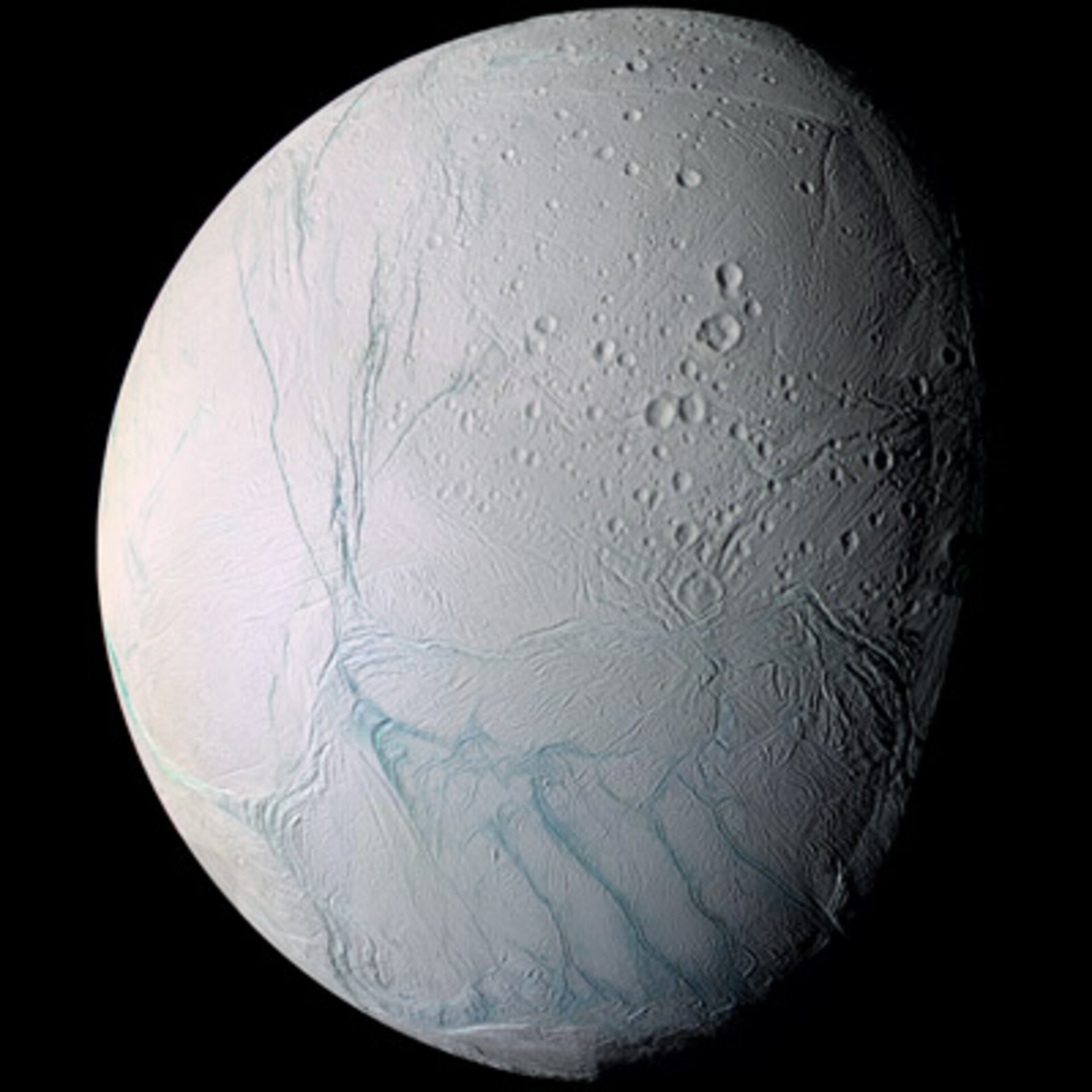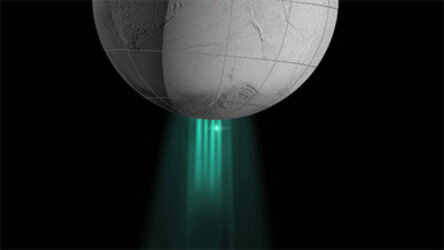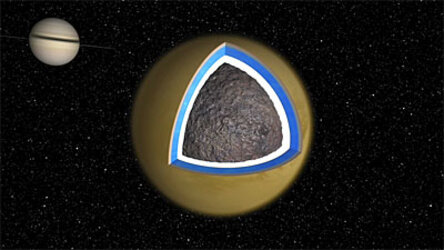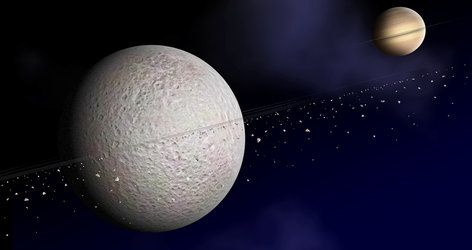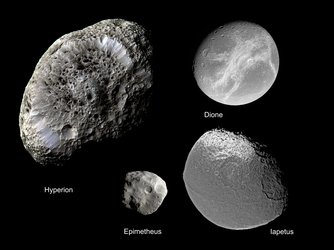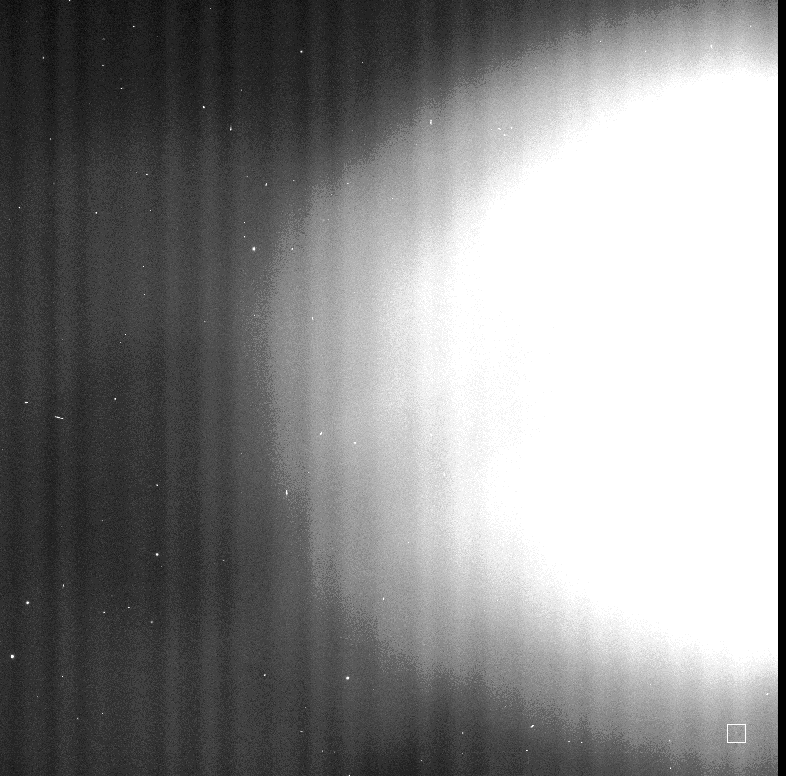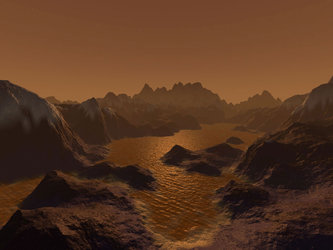Cassini finding hints at ocean within Saturn’s moon Enceladus
European scientists on the joint NASA/ESA Cassini mission have detected, for the first time, sodium salts in ice grains of Saturn’s E-ring, which is primarily replenished by material from the plumes of water vapour and ice grains emitted by Saturn’s moon Enceladus. The detection of salty ice indicates that the little moon harbours a reservoir of liquid water, perhaps even an ocean, beneath its surface.
Cassini discovered the water-ice plumes on Enceladus in 2005. These plumes, emitted from fractures near its south pole, expel tiny ice grains and vapour, some of which escape the moon’s gravity, replenishing Saturn’s outermost ring, the E-ring.
Cassini’s Cosmic Dust Analyzer, led by Principal Investigator Ralf Srama, of the Max Planck Institute for Nuclear Physics in Heidelberg, Germany, has examined the composition of these grains and found sodium salt (or table salt) within them.
“We believe that the salty material deep inside Enceladus washed out from rock at the bottom of a liquid layer,” said Frank Postberg, Cassini scientist on the Cosmic Dust Analyzer at the Max Planck Institute for Nuclear Physics in Heidelberg, Germany. Postberg is lead author of a study that appears in the 25 June issue of the journal Nature.
Scientists working on the Cosmic Dust Analyser conclude that liquid water must be present because it is the only way to dissolve significant amounts of minerals to account for the levels of salt detected. The process of sublimation — the mechanism by which vapour is released directly from solid ice in the crust — cannot account for the presence of salt.
The makeup of the E-ring grains, determined through the chemical analysis of thousands of high-speed particle hits registered by Cassini, provides indirect information about the composition of the plumes and about what lies inside Enceladus. The E-ring particles are almost pure water-ice, but nearly every time the dust analyzer checked for composition, it found at least some sodium within the particles.
If the liquid source is an ocean, then that, coupled with heat measured at the surface near the moon’s South Pole and the organic compounds found within the plumes, could provide a suitable environment on Enceladus for the formation of life precursors
“Our measurements imply that besides table salt, the grains also contain carbonates like soda; both components in concentrations that match the predicted composition of an Enceladus ocean,” said Postberg. “The carbonates also provide a slightly alkaline pH value. If the liquid source is an ocean, then that, coupled with the heat measured at the surface near the moon’s South Pole and the organic compounds found within the plumes, could provide a suitable environment on Enceladus for the formation of life precursors.”
In another study published in Nature, researchers doing ground-based observations did not see sodium, an important component of salt. That team notes that the amount of sodium being expelled from Enceladus is actually less than what is observed around many other planetary bodies. These scientists were looking for sodium in the plume vapour and couldn’t see it in the expelled ice grains. They argue that, if the plume vapour does come from ocean water, then the evaporation must happen slowly deep underground, rather than as a violent geyser erupting into space.

Finding salt in the plume gives evidence for liquid water below the surface. The lack of detection of sodium vapour in the plume gives hints about what the water reservoir might look like,” said Sascha Kempf, Cassini scientist on the Cosmic Dust Analyzer from the Max Planck Institute for Nuclear Physics.
Postberg added, "The original picture of the plumes as violently erupting Yellowstone-like geysers is changing. They seem more like steady jets of vapour and ice fed by a large water reservoir. However, we can’t decide yet if the water is currently ’trapped’ within huge pockets in Enceladus’s thick ice crust or is still connected to a large ocean in contact with the rocky core."
"Potential plume sources on Enceladus are an active area of research with evidence continuing to converge on a possible salt-water ocean," said Linda Spilker, Cassini deputy project scientist. "Our next opportunity to gather data on Enceladus will come during two flybys in November."
“The discovery of the Enceladus plume is one of the top scientific achievements of the Cassini-Huygens mission so far. These new results are inviting Cassini to making further in situ analysis of their composition; they are also whetting our appetite to further investigate whether Enceladus is habitable.” said Jean-Pierre Lebreton, ESA’s Huygens Project Scientist.
Determining the nature and origin of the plume is a top priority for Cassini during its extended tour, called the Cassini Equinox Mission.
Notes for editors:
The Cassini-Huygens mission is a cooperative project of NASA, ESA and the Italian Space Agency. NASA’s Jet Propulsion Laboratory (JPL), Pasadena, California, manages the Cassini-Huygens mission for NASA's Science Mission Directorate. The Cassini orbiter was designed, developed and assembled at JPL. The Cosmic Dust Analyzer is operated from the Max Planck Institute for Nuclear Physics in Heidelberg, Germany.
‘Sodium salts in E-ring ice grains from an ocean below the surface of Enceladus’ by F. Postberg1, S. Kempf, J. Schmidt, N. Brillantov, A. Beinsen, B. Abel, U. Buck and R. Srama appears in the 25 June 2009 issue of the Journal Nature.
For more information:
Frank Postberg, Institut für Geowissenschaften, Heidelberg, Germany
Email : Frank.Postberg @ mpi-hd.mpg.de
Ralf Srama, Max Planck Institute for Nuclear Physics
Email : Ralf.Srama @ mpi-hd.mpg.de
Jean-Pierre Lebreton, ESA Huygens Project Scientist
Email : Jean-Pierre.Lebreton @ esa.int


